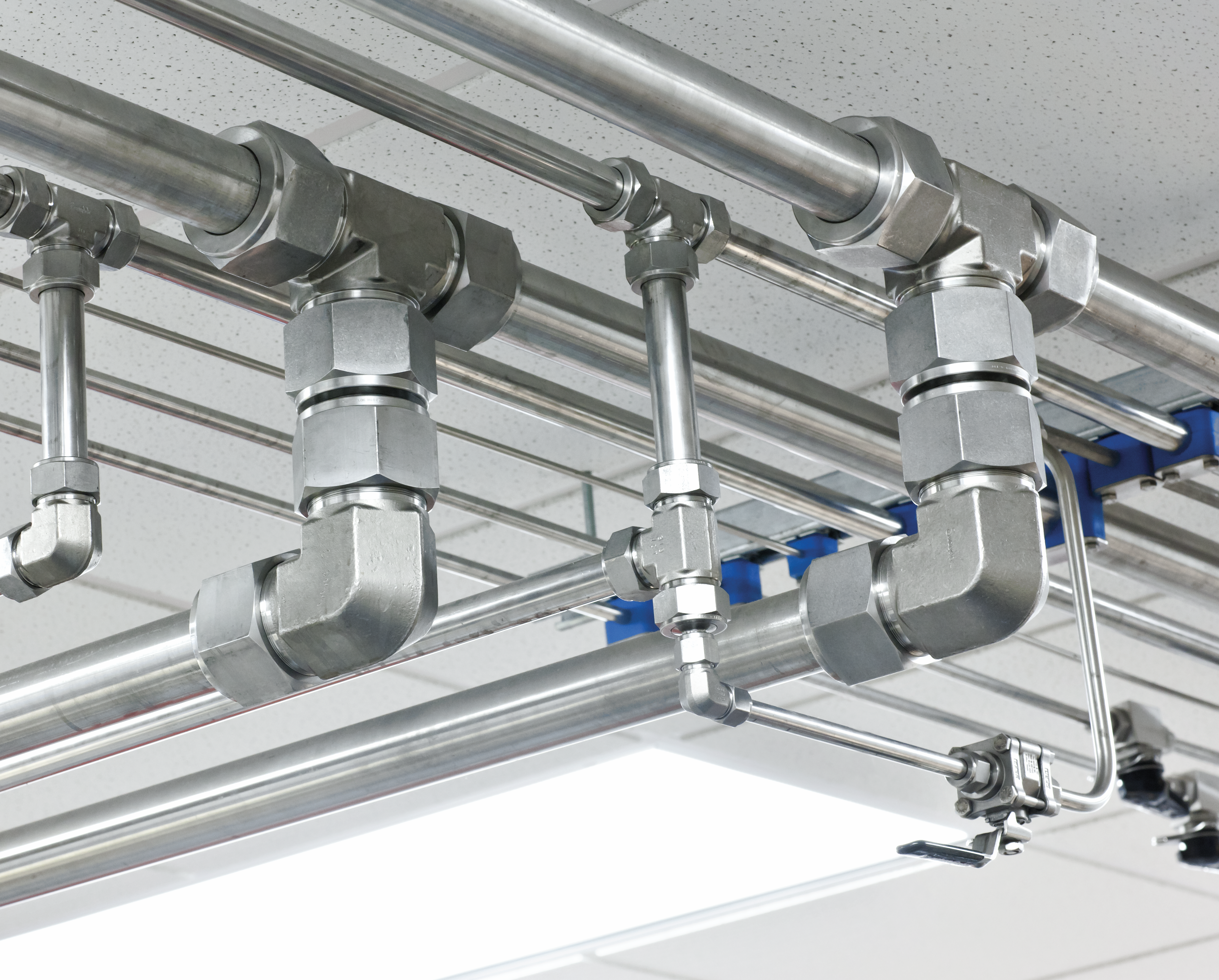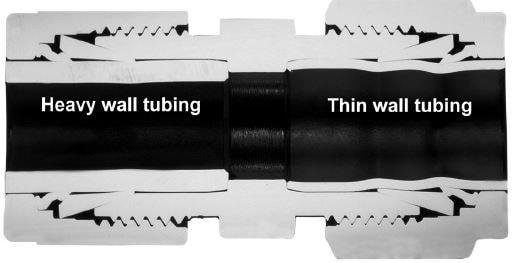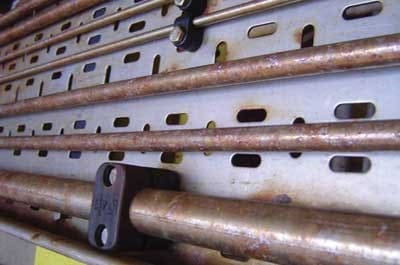Tubing Selection

Tubing Selection
Written by: Tyler McGinnis, Technical Service and Support | January, 2019
A leak free tube system relies on three things: an educated installer, quality tube connections, and correct tubing for the system conditions. Oftentimes, tubing is chosen based on order history and supplier availability, but installers should never assume compatibility without fully understanding the system it will be installed in. As with all Swagelok components, great care should be taken when specifying and purchasing tubing, and all aspects of the system reviewed to ensure optimal performance and operation.
System parameters to review:
- Normal system operation pressure and temperature
- Maximum operation pressure and temperature
- Ambient temperatures and conditions, including external exposure
- Process fluid and external media exposure
This information will help determine the necessary wall thickness and material of construction.
Wall Thickness
Wall thickness refers to the size, in inches, of the difference between the outside and inside diameter of the tubing, divided by two, and is used to determine the working pressure of the tubing. Working pressures are regulated by ASTM standards and vary based on the material of construction and outside diameter. Wall thickness will also have an effect on a tube fitting's ferrule action and its ability to coin out minor surface imperfections. Figure 1 below illustrates ferrule action with heavy and thin wall tubing.
Figure 1: Ferrule action and wall thickness
As seen in Figure 1, thin wall tubing offers less resistance to ferrule action during fitting pull-up and reduces the chance of coining out surface defects such as scratches.
Material of Construction
The tubing material will vary based on the process, external media, and the effects it will have on the tubing. For example, some chloride-rich environments such as saltwater speed up the corrosion process for certain alloys, like 316 stainless steel. All media contact with the system should be reviewed to ensure compatibility. Figure 2 below illustrates corrosion (rust) on 316 stainless steel tubing.
Figure 2: Corrosion on stainless steel tubing
Other Considerations
Additional tubing variables to consider are tubing hardness, ovality, and surface finish. As a general rule, metal tubing must always be softer than the fitting material. For example, brass fittings should never be used with stainless steel tubing. In the event that the tubing and fitting materials are the same, the tubing must be fully annealed to allow fitting pull-up.
Tubing that will not easily fit into the fitting nuts, ferrules, or bodies should never be forced into the fitting. This action may scrape the tube outside diameter and prevent complete sealing from occurring.
Surface finish is critical to proper sealing. Tubing that is embossed, has a seam, flat spots, scratches, or draw marks on the outside diameter may not properly seal.
When chosen correctly and paired with high quality tube connections, tubing should provide years of leak-free service in your facility. For more information regarding tubing selection, please reach out to me at tyler.mcginnis@swagelok.com or consult the Swagelok Tubing Data Sheet to learn more.


